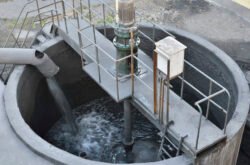Hydraulic Lock
Understanding Hydraulic Lock: Causes, Effects, and Preventative Measures
Hydraulic lock, often referred to as hydrolock, is a mechanical condition that many automotive technicians and engineers dread. When it occurs, it can lead to significant engine damage, resulting in costly repairs or even total engine replacement. This article delves into the intricacies of hydraulic lock, exploring its causes, effects, and how to prevent such a vexing situation.
What is Hydraulic Lock?
Hydraulic lock is a condition that occurs when a liquid enters the combustion chamber of an internal combustion engine, preventing the engine’s pistons from completing their compression strokes. In a typical four-stroke engine, air and fuel are mixed in the combustion chamber and ignited, producing power that drives the engine. However, if liquid—commonly water—fills the combustion chamber, the pistons cannot compress it because liquids are almost incompressible.
Mechanics of an Engine
To appreciate the impact of hydraulic lock, it’s crucial to understand how an internal combustion engine operates. The engine functions in cycles: intake, compression, power, and exhaust. During the intake stroke, air (and in gasoline engines, a mixture of air and fuel) enters the combustion chamber. In the compression stroke, the piston moves upwards, compressing the air-fuel mixture. If a liquid, like water, infiltrates this space, it prevents the piston from rising completely, leading to potential catastrophic failure.
Types of Fluids That Cause Hydraulic Lock
While water is the most common culprit of hydraulic lock, other fluids can also cause this issue. They include:
- Antifreeze: If there’s a head gasket failure or a crack in the engine block, antifreeze can leak into the cylinders.
- Fuel: A poorly tuned engine may experience excessive fuel entering the cylinder, especially in flooded conditions.
- Oil: In an engine with a failing seals or gaskets, engine oil can seep into the combustion chamber.
Causes of Hydraulic Lock
Water Ingress
Water is the primary cause of hydrolock. This can happen due to several environmental or mechanical factors:
- Flooded Areas: Driving through flooded roads can cause water to be sucked into the engine’s air intake system.
- Heavy Rain: Prolonged exposure to rain, especially if the intake is inadequately shielded, increases the risk of water entering.
- Improper Maintenance: Neglecting seals and gaskets can allow water to enter the engine.
Mechanical Failures
Mechanical failures also contribute to hydraulic lock. Common scenarios include:
- Head Gasket Failure: A faulty head gasket can allow coolant to enter the combustion chamber.
- Cracked Engine Block: An engine block crack can lead to internal leaks of coolant or other fluids.
- Poor Engine Design: Some engines may be more susceptible to hydrolock due to their design or the placement of the air intake.
Fuel Injection Issues
Modern engines equipped with fuel injection systems can also be susceptible to hydraulic lock:
- Excessive Fuel Injection: A malfunctioning fuel injector can continuously inject fuel into the combustion chamber, leading to a flooded condition.
- Carburetor Flooding: Older vehicles with carburetors may flood the engine due to malfunctioning float valves or an overrich mixture.
Effects of Hydraulic Lock
Immediate Consequences
When hydraulic lock occurs, the immediate impact on the engine can be severe:
- Piston Damage: The piston may bend or break as it attempts to compress the incompressible fluid.
- Connecting Rod Issues: The connecting rods can break or bend, as they are not designed to handle the forces generated during a hydrolock event.
- Crankshaft Damage: In severe cases, the crankshaft can also be damaged, leading to expensive repairs.
Long-Term Effects
Beyond the immediate damages, hydraulic lock can have long-term consequences for the engine’s health:
- Reduced Engine Life: Even if repaired, an engine that has experienced hydraulic lock may suffer from reduced performance or longevity.
- Residual Damage: Depending on the extent of the failure, other components may also be damaged, leading to future issues.
- Costly Repairs: The cost of repairs can escalate dramatically if the engine is not addressed promptly. In many cases, total engine replacement may be necessary.
Diagnosing Hydraulic Lock
To diagnose hydraulic lock, technicians will typically go through several steps:
- Visual Inspection: This involves examining the engine for obvious signs of fluid leaks or excessive moisture.
- Check for Compression: Using a compression gauge, mechanics can check the pressure in each cylinder. A significant drop in compression in one or more cylinders may indicate the presence of liquid.
- Inspect Fluids: Checking motor oil and other fluids can reveal contamination (e.g., water in the oil) that can point to the cause of the hydraulic lock.
Repairing Hydraulic Lock Damage
If hydraulic lock occurs, prompt action is critical. The following steps are usually taken during repair:
- Drain and Remove Fluids: The contaminated fluids need to be drained from the engine before any further inspection can occur.
- Disassemble Engine Components: The technician may need to disassemble various engine components, such as the cylinder head, to assess the extent of the damage.
- Inspect Each Component: Critical engine parts (pistons, connecting rods, crankshaft) must be inspected for any bend, breakage, or scoring.
- Replace Damaged Parts: Any damaged components will require replacement to restore the engine to full functionality.
- Reassemble and Test: After repairs, the engine is reassembled and tested thoroughly before returning it to operational status.
Preventative Measures
Avoiding hydraulic lock requires proactive maintenance and precautions:
Regular Maintenance
- Inspect Seals and Gaskets: Routine checks on engine seals and gaskets can help identify potential issues before they lead to leaks.
- Monitor Coolant Levels: Keeping an eye on coolant levels and addressing any drops can help prevent coolant from entering the combustion chamber.
- Seal Air Intake: Ensuring that the air intake system is properly sealed from water ingress is essential in preventing hydrolock.
Driving Cautions
- Avoid Flooded Areas: Whenever possible, avoid driving through known flooded areas or heavy rain.
- Be Aware of Weather Conditions: If heavy rain or flooding is expected, consider not driving your vehicle.
Engine Mods and Upgrades
For those who work on performance engines, consider:
- Improved Air Intake Systems: Upgrading to an air intake system that is better sealed and positioned higher can help prevent water entry.
- Enhanced Engine Blocks: Certain aftermarket solutions can improve the durability of your engine components against hydrolock events.
Conclusion
Hydraulic lock is a serious condition that can lead to extensive damage and costly repairs for an internal combustion engine. Understanding what causes hydraulic lock, recognizing its symptoms, and taking preventative measures can help many vehicle owners avoid the frustrations and costs associated with this mechanical failure. By adhering to regular maintenance practices and driving cautiously, you can significantly minimize the risk of encountering hydraulic lock, allowing for the longevity and reliability of your engine.
As technology progresses and electric vehicles become more prevalent, the prevalence of hydraulic lock issues may decline, but understanding this phenomenon remains critical for current automotive enthusiasts and professionals alike. A better grasp of the factors contributing to hydraulic lock equips individuals with the knowledge necessary to care for their engines properly and make informed decisions about their vehicle maintenance. In a world where vehicles are not just transportation but a reflection of our values and passions, maintaining the integrity of our engines is paramount.


